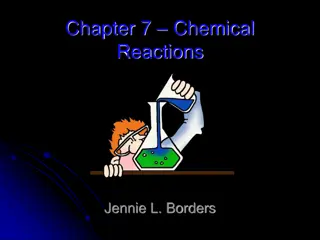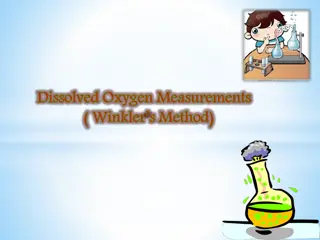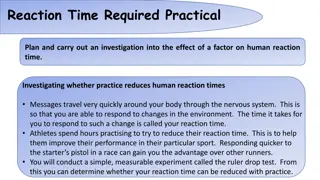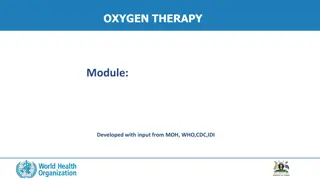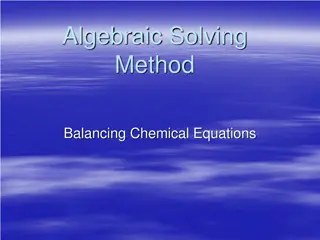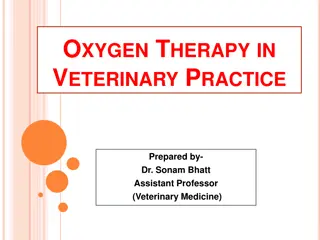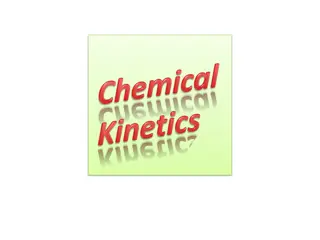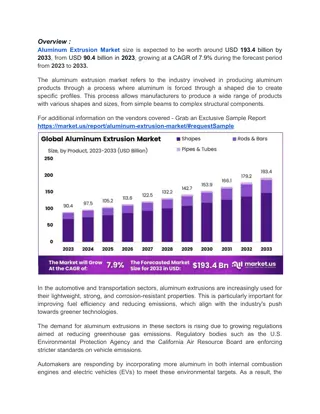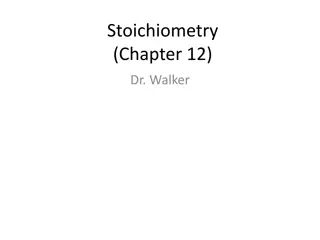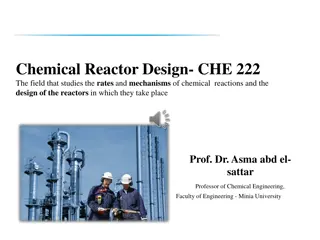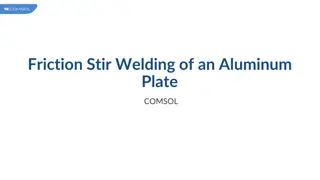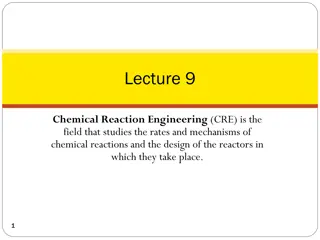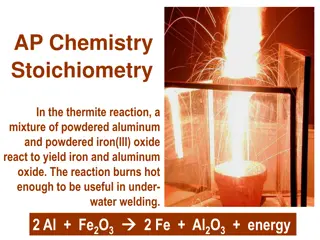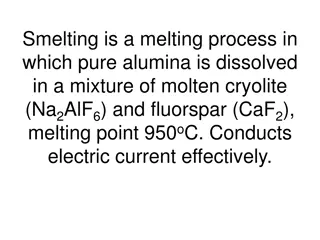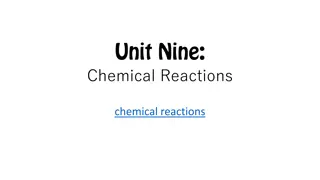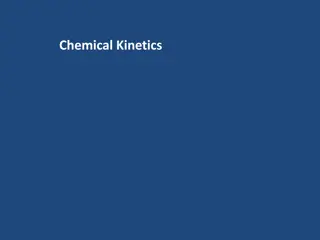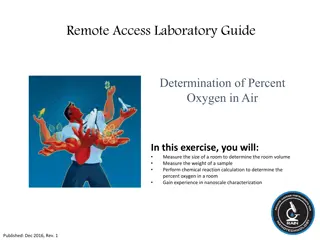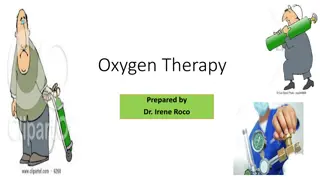Balancing Chemical Equations: Aluminum and Oxygen Reaction
In this interactive drill, you will practice balancing the chemical equation for the reaction between aluminum and oxygen to form aluminum oxide. Follow the step-by-step process provided for each part of the equation to ensure accuracy. Start with the word equation and progress to the balanced chemical equation with phases. Improve your chemical equation balancing skills by working through different variations of the reaction. Check your solutions as you go to reinforce your understanding.
Download Presentation

Please find below an Image/Link to download the presentation.
The content on the website is provided AS IS for your information and personal use only. It may not be sold, licensed, or shared on other websites without obtaining consent from the author.If you encounter any issues during the download, it is possible that the publisher has removed the file from their server.
You are allowed to download the files provided on this website for personal or commercial use, subject to the condition that they are used lawfully. All files are the property of their respective owners.
The content on the website is provided AS IS for your information and personal use only. It may not be sold, licensed, or shared on other websites without obtaining consent from the author.
E N D
Presentation Transcript
Precipitation Double immunodiffusion Radial immunodiffusion
Precipitation Is a secondary serological test where Ag is soluble not a particulate cell. A precipitation line appears at optimal proportions of Ag and Ab not equal proportions. This is explained by Lattice theory This test was first done in a test tube, now it is done as a diffusion method.
Precipitin reactions The result of the reaction between soluble antigen and soluble antibody to form a lattice until the complex is large enough to become insoluble and form visible precipitate .This occurs at the Zone of Equivalence
Precipitation Reactions in Gel A-Eelectrophoresis B-Immunodiffusion 2- Countercurrent Immunoelectro- phoresis 1-Single Diffusion RID 1- Serum Protein electrophoresis 2-Double diffusion 3- (Rocket) Technique 4- Electro- immunodiffusion 5- Immunoelectro- phoresis 6- Immunoblotting
Double Immunodiffusion Diffusion of antibody and antigen towards each other in an Agarose gel. A line of precipitate will form if the antibody binds to antigen. Used to determine if an antigen or antibody is present
Ouchterlony double immunodiffusion test Ab is delivered into the central well and different patient samples are delivered into the surrounding wells, the plate is then incubated 24 to 48 hours. A line of precipitation appears at optimal proportions of Ag and Ab. This test is qualitative. This test is used to: 1. Diagnose fungal Ags in body fluids. 2. Determine relationship between Ags.
Single Radial Immunodiffusion Immunoglobulin G (IgG) is the Major antibody in human serum It accounts for approximately 75% of the total immunoglobulin pool Its concentration is 1200 mg/dl IgG will react with anti Human IgG antibody to form Ag-Ab complex In Single Radial Diffusion: one component is fixed (e.g. Ab :in this case it is anti-IgG) Precipitation Reaction: When the Antigen and Antibody are in soluble form, the interaction between them causes precipitation.
Mancini In radial immunodiffusion Antibody (anti-IgG antibody) is incorporated into the agar gel as it is poured Different dilutions of the serum are placed in holes punched into the agar. As the IgG diffuses into the gel it reacts with the antibody anti -IgG and when the equivalence point is reached a ring of precipitation is formed The diameter of the ring is proportional to the concentration of IgG since the amount of antibody is constant.
Thus, this is a quantitative test. This test is commonly used in the clinical laboratory for the determination of immunoglobulin levels( IgG, IgM, IgA, IgE, IgD) in patient samples. Also to determine complement components C3,C4 concentration. Thus, by running different concentrations of a standards one can generate a standard curve from which one can quantitate the amount of an antibody in an unknown sample.
Radial Immunodiffusion (Mancini) Ab in gel Method Ab incorporated in gel (anti-IgG) Ag Ag Ag Ag Ag in a well(IgG, IgM) Interpretation Diameter of ring is proportional to the concentration Quantitative Ig levels ,C3,C4 conc. Diameter2 Ag Concentration
RID After plotting the curve from standard, the concentration of test sample is determined from diameter of precipitin ring
Precipitation Reactions in Gel A-Eelectrophoresis B-Immunodiffusion 2- Countercurrent Immunoelectro- phoresis 1-Single Diffusion RID 1- Serum Protein electrophoresis 2-Double diffusion 3- (Rocket) Technique 4- Electro- immunodiffusion 5- Immunoelectro- phoresis 6- Immunoblotting
Normal Pattern Monoclonal gammopathy Polyclonal gammopathy Chronic inflammation Cirrhosis
Immunoelectrophoresis Method Ags are separated by electrophoresis Ab is placed in trough cut in the agar - + Ag Ag Ab Ag Ab Interpretation Precipitin arcs represent individual antigens
Countercurrent electrophoresis Method The same principle as double immunodiffusion test but Ag and Ab migrate toward each other by electrophoresis. Used only when Ag and Ab have opposite charges Qualitative Rapid
Agglutination vs. Precipitation Agglutination Precipitation Insoluble or particulate Ag or Ab Ag must have at least two determinants Ag excess results in Postzone reaction Ab excess results in Prozone reactions Reaction time: minutes to hours Test results: qualitative or semi-quantitative Soluble Ag & Ab Ag must have at least two determinants Ag excess results in Postzone reaction Ab excess results in Prozone reactions Reaction time: hours to days Test results: qualitative, semi quantitative or quantitative


